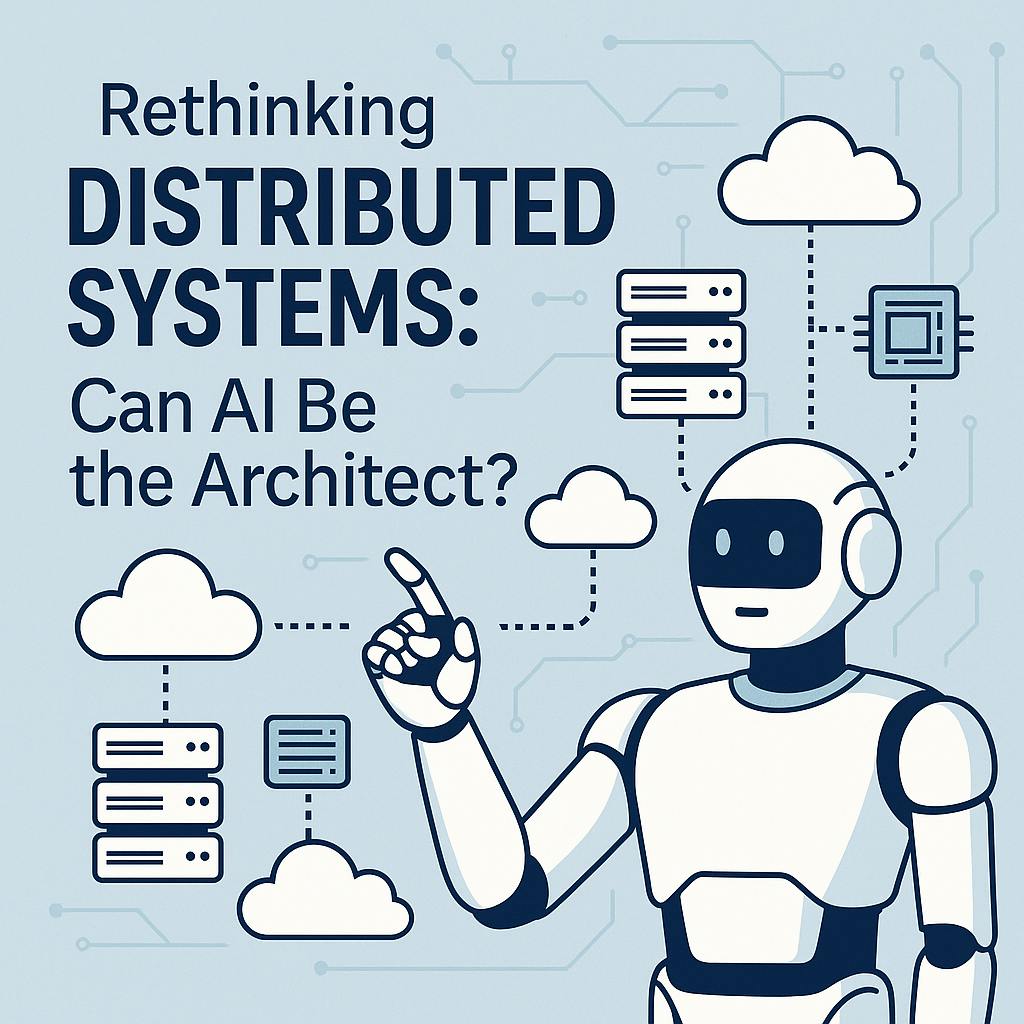Distributed systems are the core of any software systems, whether it’s cloud, an E2E software running a business, or a small part of a large software system, distributed systems are everywhere, making sure all the process goes smoothly. It brings systems under one umbrella to make the entire process run.
They bring multiple components together under one virtual roof to achieve a common goal:
No Downtime. High Availability.
In short: distributed, yet united.
What’s Running the Show?
At the core of all the software today runs distributed systems, but whether we are:
-
scaling a new software system
-
bringing a monolith to microservices
-
upgrading the existing distributed system to handle the increased load,
In all these cases, we need ONLY the human brain. But why do we need ONLY a human brain? Why not use an AI brain? So, here is my proposal: Let AI read the system and suggest how to implement and/or optimize distributed systems. Let AI be the Architect. And keep monitoring and keep upgrading. Having said that, we can not throw human brain dependency out of the window, or can we?
That’s exactly what this post explores.
Why Now?
AI is automating everything in today’s world, so why not systems (distributed) internal to all the systems? With the help of AI integration in the distributed systems world, all the manual processes can be automated.
Some of the entities of this architecture are already AI-Powered today:
- Auto-scaling compute and storage
- Intelligent CDN and caching
- Choosing trade-offs between consistency and availability (CAP)
- Identifying bottlenecks and hot spots
Yet, the actual decision-making and system design still depend on humans. This is our opportunity to elevate that.
How - The Proposal: AI as a System Architect
Here are some proposed step-by-step: AI in Distributed System Design
- System Access
-
Give the AI agent permission to inspect your existing architecture (cloud configs, services, logs, metrics, and infrastructure setup).
-
- Observation
-
The AI reads your system's structure, dependencies, load balancers, databases, and traffic patterns.
-
It evaluates whether the system aligns with best practices (or if it’s secretly a tech debt monster).
-
- Recommendation Engine
- AI generates improvement suggestions:
-
Should you introduce sharding?
-
Add a new layer of caching?
-
Switch from SQL to NoSQL for a specific service?
-
Offload static content via CDN?
-
Improve replication/fault tolerance?
-
What about redundancy? Keep them or add them?
-
Shall we have both consistency and availability in different parts of the system?
-
Switch the system from read-heavy to write-heavy and add support for it? Or vice versa?
-
- AI generates improvement suggestions:
- Feasibility Check
-
AI checks whether the system can handle the proposed changes.
-
If yes:
-
AI can apply the upgrade (with or without human approval).
-
-
If no:
-
AI suggests what you need to enable the changes (e.g., infra upgrades, configuration adjustments).
-
-
- Monitoring & Auto-Healing
-
Post-upgrade, AI continues to monitor system health.
-
If issues arise, AI performs auto-remediation — scaling, switching servers, restarting pods, clearing cache, etc.
-
Will This Eliminate the Human Brain?
Not quite.
AI can recommend and even automate many parts of distributed system design and maintenance. But we’ll still need human oversight to:
- Define goals
- Make nuanced trade-offs
- Handle ethical and business implications
- Validate AI's suggestions in mission-critical environments
In other words: AI is the architect's assistant — not the architect itself.
Final Thoughts
AI is good at reading patterns. Distributed systems are full of patterns.
Bringing AI into the very fabric of distributed systems can make them smarter, more self-aware, and more resilient. It’s a natural next step in systems evolution.


